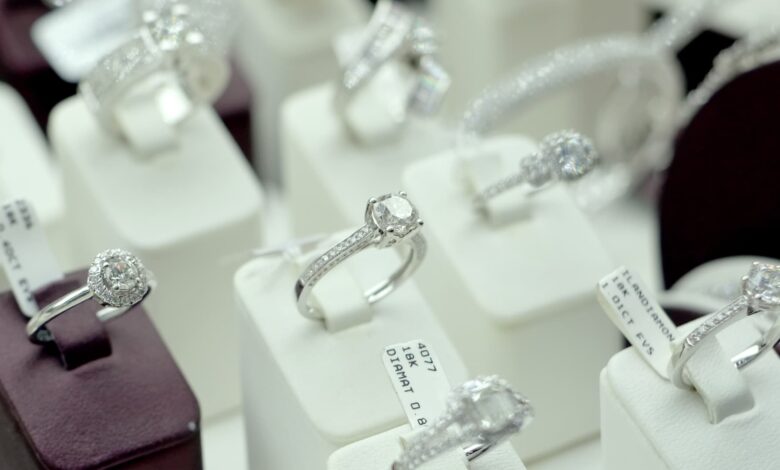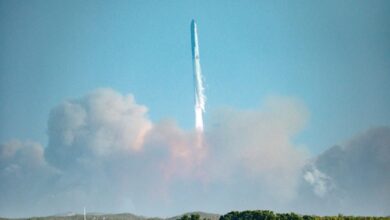Tariffs mark the latest blow for already struggling diamond sector

Diamond rings and bracelets on display in a show window in Antwerp, Belgium. (Photo by Yuriko Nakao/Getty Images)
Yuriko Nakao | Getty Images News | Getty Images
Despite being the hardest material on earth, diamonds are facing vulnerability due to U.S. President Donald Trump’s tariff policies. The diamond industry is preparing for a 10% import duty to the U.S., a major market for polished diamonds. The sector is also on guard for additional duties if no new agreements are reached after the 90-day pause.
Karen Rentmeesters, CEO of the Antwerp World Diamond Centre, stated that the industry is already grappling with various challenges, and tariffs are adding to the burden. The intricate supply chain of diamonds, from mines to trading hubs to manufacturers, makes the industry highly sensitive to trade disruptions.
While other raw materials like gold and copper have been exempt from U.S. tariffs, the diamond industry is advocating for diamonds to be excluded as well. Rentmeesters emphasized that loose diamonds can be considered raw materials as they are transformed into jewelry pieces before reaching consumers.
The luxury industry, already facing a slowdown in demand post-pandemic and economic challenges in China, is further impacted by the rise of lab-grown diamonds. These chemically identical stones are indistinguishable from natural diamonds and are sold at a significant discount, leading to a shift in consumer preferences.
Lab-grown diamonds mark an ongoing shift
Lab-grown diamonds have disrupted the industry, with over half of U.S. couples opting for them in their engagement rings. The affordability and similarities to natural diamonds have made them a popular choice among consumers.
In 2021, Pandora, the world’s largest jewelry brand, ceased selling mined diamonds, reflecting the growing trend towards lab-grown diamonds. The industry is at a tipping point between natural and lab-grown diamonds, with prices of mined diamonds decreasing significantly.
Analysts suggest that consumers are beginning to differentiate between natural and lab-grown diamonds based on price and value. Key players in the industry are adapting their strategies to navigate this shift.
Tariffs threaten stabilization point
As the industry approaches a stabilization point between natural and lab-grown diamonds, companies like De Beers are reaffirming their commitment to natural diamonds. De Beers recently announced the closure of its lab-grown diamond brand to focus on natural diamonds.
Despite challenges, the jewelry sector remains a bright spot in the luxury market, catering to affluent clientele. Companies like Richemont have seen growth in their jewelry divisions, emphasizing the importance of storytelling and consumer confidence in natural diamonds.





